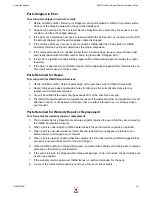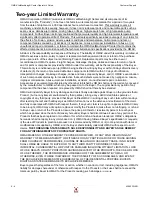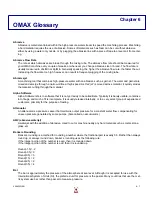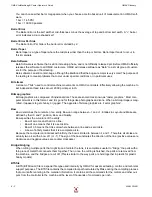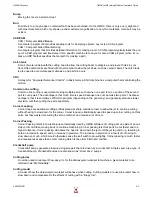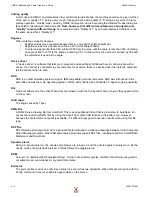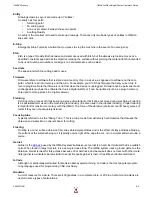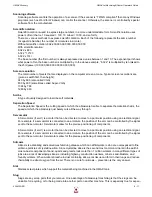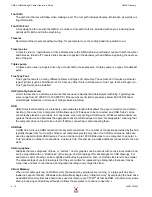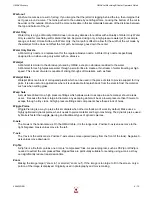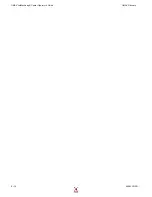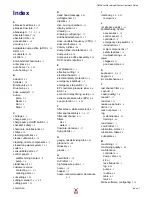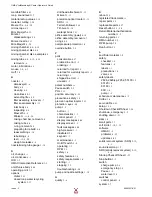
OMAX Glossary
OMAX JetMachining® Center Operator’s Guide
400433D-EN
6 - 13
Surface Roughness
Surface roughness is an indication of the finest (shortest wavelength) irregularities of a surface. Roughness gen-
erally results from a particular production process or material condition. For abrasive waterjet cutting, the rough-
ness profile created by individual abrasive particles is compounded with the waviness generated by the
dynamics of the jet (so called “striation marks”).
Tab/Tabbing
“Tabs” are small pieces of material that hold parts together preventing them from sliding into the collection tank
and from being moved by the abrasive jet. Tabs are mostly used with thin materials, both because a tab in thick
material can be difficult to break, and because thin materials tend to have more problems with parts floating in
the tank.
Table
The area of the machine that contains the slats.
Tail
See “Jet Lag”.
Tangent
There are two distinct definitions for “tangent,” one from geometry, and one from trigonometry.
Geometry
: A line that touches a circle at one (and only one) point. This means the line cannot pass into the inte-
rior of the circle (or it would touch the circle twice). This definition of “tangent” is used by the Tangent snap in
Layout.
Trigonometry
: The tangent of an angle is the ratio of the leg opposite divided by the leg adjacent (for a right tri-
angle). This definition of “tangent” is used for math functions in Layout.
Taper
Taper is the difference in the width of the cut from top to bottom. A certain amount of taper is inherent in all abra-
sive jets.
Taper angel per side
The Taper Angle Per Side is the taper angle divided by two.
Taper Angle
The Taper Angle is the included angle of the kerf. A positive taper angle indicates a V-shaped kerf.
Taper Error
Taper Error is the top kerf width minus bottom kerf width. A positive taper error indicates a V-shaped kerf.
Taper Error Per Side
The Taper Error Per Side is the taper error divided by two.
Tilt-A-Jet®
Tilt-A-Jet (TAJ) represents the latest OMAX innovation in the continuing search for more accurate abrasivejet
machining. Tilt-A-Jet lets the OMAX JetMachining Center achieve virtually zero taper with most materials. As the
machining nozzle moves along the tool path, Make calculates the amount of taper, and then tilts the machining
head to exactly offset the taper from the abrasivejet.
Tolerance
Tolerance is how close the finished part measures to the original drawing.
Tool Offset
The amount the tool is shifted away from the part to be cut. Tool Offset = 1/2 of the kerf width of the cutting noz-
zle. This compensates for the stream of abrasive water not being infinitely thin.
Summary of Contents for JetMachining Center 2626
Page 8: ...OMAX JetMachining Center Operator s Guide viii 400433D EN ...
Page 12: ...OMAX JetMachining Center Operator s Guide xii 400433D EN ...
Page 22: ...OMAX JetMachining Center Operator s Guide Safety First 1 10 400433D EN ...
Page 140: ...OMAX JetMachining Center Operator s Guide OMAX Glossary 6 16 400433D EN ...
Page 144: ...OMAX JetMachining Center Operator s Guide Index 4 400433D EN ...

